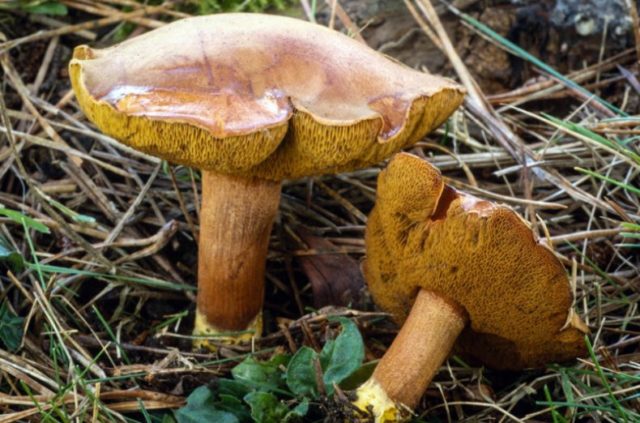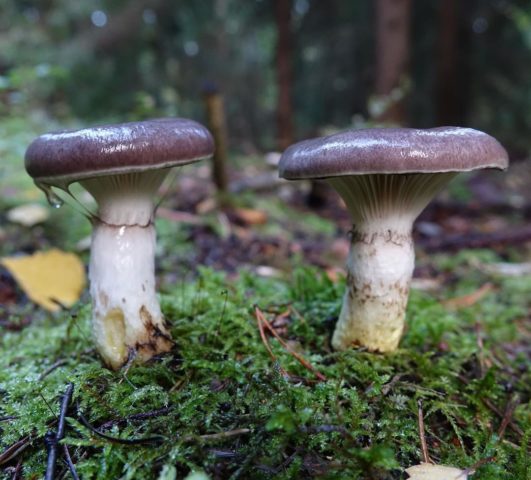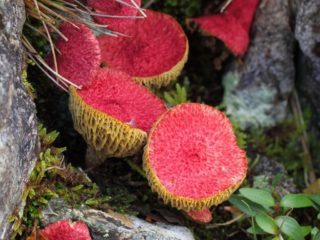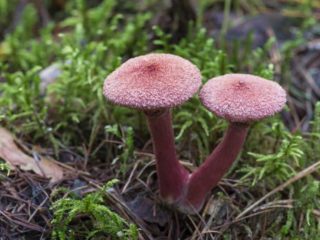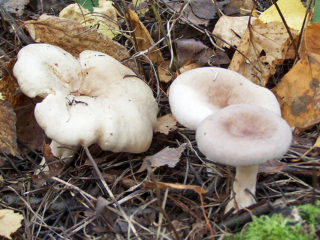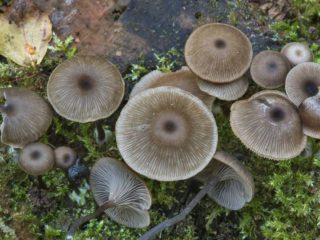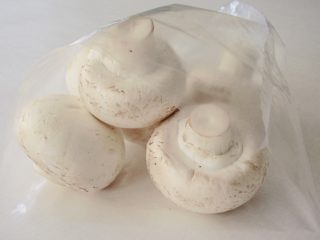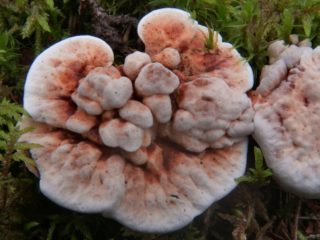Content
The remarkable Boletin belongs to the Maslenaceae family. That's why the mushroom is often called butterfly. In the literature on mycology they are mentioned under synonyms: boletinus spectabilis, fuscoboletinus spectabilis, suillus spectabilis.
The definition is based on appearance - a bright brown cap.
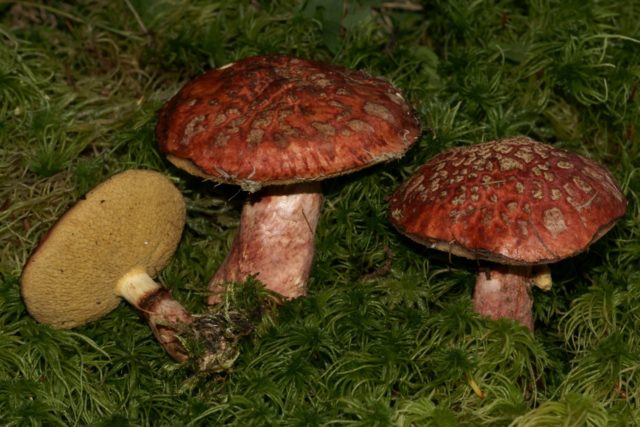
Bolethin often settles under larches in numerous colonies, with which the fungus enters into symbiosis through mycorrhiza
Where does the remarkable bolethin grow?
This species has a wide geographical distribution in the Northern Hemisphere:
- Eurasia, especially Siberian forests;
- USA and southern Canada.
The mushroom grows under coniferous trees and is found in forests with mixed species. Signs of the appearance of remarkable bolethins may be wet forests near swamps, the presence of small but numerous streams and small rivers. In drier areas the species is found much less frequently.
Colonies of remarkable boletines are most often located in clearings, forest edges, along clearings or forest roads, where there is more sunlight. In damp forest areas, this remarkable species also grows in shaded areas. Often the small fruiting bodies are full of elegant ones, completely hidden under the pine litter. Boletines bear fruit from July to September.
What a remarkable Boletin looks like
The species, like all butterfish, has a wide cap, up to 15 cm, scaly, with a skin that is easily removed and a noticeable characteristic stickiness. In young mushrooms, the cap is spherical, then becomes conical and finally opens. The shade of the skin of the oiler is remarkably special - bright dark red, with a slight brown tint. Small zones of grayish color are visible along the entire apex of the bolethin.
When cut, the yellow flesh turns yellow-pink, but not immediately, but after about half an hour. After a few hours, the exposed portion of the pulp turns brown.
The tubular bottom of the cap is yellow, turning brown in older mushrooms. The pores are small, up to 1 mm wide. The spore mass is yellow-brown in color.
The remarkable boletin rests on a stalk 3-11 cm high, which is usually no thicker than 2 cm. It is hollow inside. On top, at a distance of 2-3 cm from the tubular bottom of the cap, there is a ring, mucous from the inside.
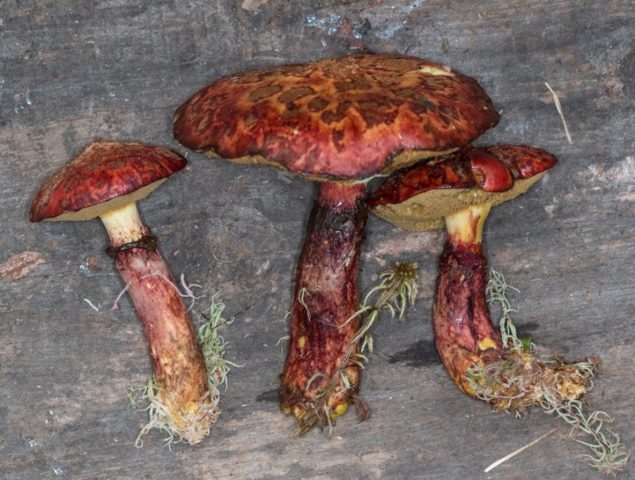
The ring seems to divide the leg into two parts - yellow, smooth on top, strewn with burgundy scales on the bottom.
Is it possible to eat boletin remarkable
Fruit bodies of a remarkable appearance are eaten after a short heat treatment. Conditionally edible mushrooms are classified into category 3 in terms of nutritional value.
Similar species
Bolethin notably resembles several other species:
- pepper mushroom;
The pepper variety is rejected due to its too pungent taste.
- spruce fly.
Spruce fly is edible, but it is often not taken because the mucus turns the mushrooms blue-violet.
But their collection is safe, because all these doubles are edible or semi-edible. False twins of the remarkable oiler have almost identical characteristics in appearance, and therefore they are distinguished only by considering the structure of the fruiting body - the lower layer of the cap and the structure of the stem:
- the pepper mushroom does not have a ring on its stem;
- the lower tubular layer is red;
- the lower part of the cap of the spruce fly, which usually grows under spruce trees, is lamellar, unlike the tubular one of boletina;
- the top of the cap is covered with a thick layer of mucus, which is not typical for a remarkable oiler.
Collection and use
Boletin is collected in environmentally friendly places, far from industrial zones and busy highways, due to the fact that the fruiting bodies accumulate toxins and heavy metals. Mushrooms emerge from the last days of June until the first frost, approximately until the end of September or the beginning of October. The most abundant fruiting is observed in July and August. It is then that it is best to collect a remarkable species, since the fruiting bodies have not yet had time to infect the worms.
The fruit body of the butterdish does not emit a strong odor; after cooking, the aroma disappears. Elegant boletin is suitable for pickles and marinades, frying and boiling. When preparing mushrooms for heat treatment, adhere to the following rules:
- remove oily skin;
- rinse the fruiting bodies well under cold water, since in hot water the boletus partially loses its taste and smell;
- then cut and washed a second time in cold water;
- Immediately place in a colander, making sure that the butter does not lie in the water for a long time, becoming tasteless.
Conclusion
Bolethin is remarkable - a noticeable inhabitant of the forest, but its taste properties are mediocre. Lookalikes of the bright oiler are edible; it is safe to collect this species in coniferous forests, especially under larches.
